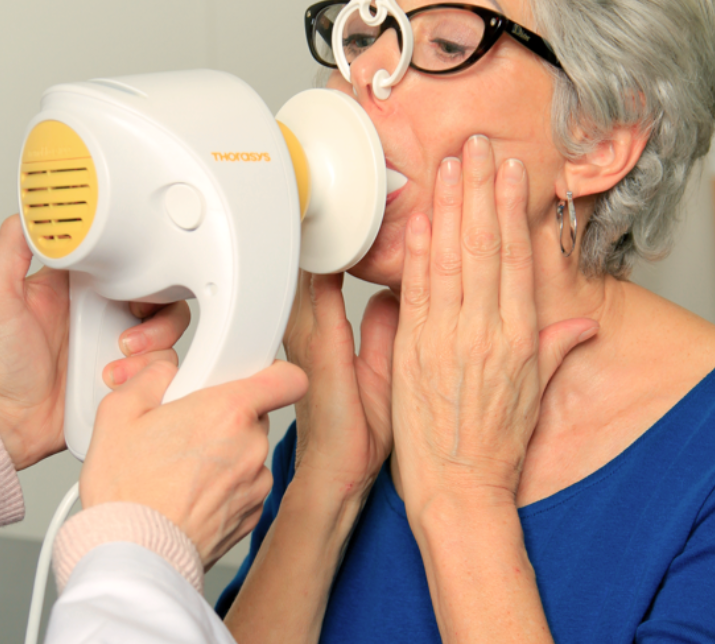ARTICLE SUMMARY:
Medtech CEOs respond to the pandemic and plan for recovery; COVID's impact on global regulatory convergence; a new lung function test suitable for COVID patients. Excerpts from the latest coronavirus analysis in MedTech Strategist, Market Pathways, and the Community Blog.
We are providing some of our COVID-19 coverage for free as a service to our medtech community. Click here for a free 7-day trial to our publications; click here to subscribe.
As COVID-19 Emergency Becomes Chronic, CEOs of ResMed and SI-BONE Pivot
As the US and the rest of the world re-open following pandemic lockdowns, each industry is banking on driving a recovery based on metrics specific to the nature of their business. For medical device companies, these include resumption of elective surgeries, movement of more procedures to hospital outpatient and ambulatory surgical center settings, and, increasingly important to building momentum for the above, motivating patients to overcome safety concerns about returning to doctors’ offices (see Figure 1).
Figure 1
Consumer Sentiment Toward Surgical Procedures*
|
|
Very Comfortable |
Comfortable |
Uncomfortable |
Very Uncomfortable |
|
May 1 |
14% |
43% |
28% |
15% |
|
May 15 |
17% |
41% |
29% |
13% |
|
*Based on survey responses of 560 investors and corporate executives, conducted April 27-29 and again on May 11-13, 2020. Source: Vijay Kumar, EvercoreISI, May 18,2020 |
||||
A big uncertainty is the rate at which elective surgeries will resume. Another is how the vendor-provider relationships will change, and the extent to which digital health strategies utilized during the lockdown will become more ingrained in providing health care. Underlying less visible and longer-term worries revolve around supply chain resiliency and the appearance of a second wave of infections next fall or winter.
MedTech Strategist spoke with the heads of two public device companies that are innovation leaders in their sectors and affected very differently: Mick Farrell, CEO of ResMed Inc., which has had to pivot to address the ventilator shortages, and Jeffrey Dunn, Chair and CEO of SI-BONE Inc., which makes an innovative spinal implant, as part of an ongoing series of articles on how industry is responding to the COVID-19 crisis and planning for recovery.
Posted on MedTech Strategist, May 19, 2020
Harmonization in the Fast Lane? COVID-19 Could Accelerate Medtech Regulatory Convergence
From a high-level political perspective, it is difficult to view the response to COVID-19 as an unbridled success of global cooperation. A pandemic by its very nature is a shared problem faced by a large swath of the globe all at once. But leaders in the US and industrialized countries have reverted at key moments of the crisis to a more nationalistic, protective stance, in some cases leading to delays and inefficiencies. However, looking a level or two below political realities, into the more technical areas of governance and regulation, experts tell a different story.
Medtech regulators around the world have earnestly elevated the goals of worldwide convergence and harmonization as priorities in recent years. And that groundwork is bearing fruit in this crisis. Strong relationships that have been nurtured over the years between global regulators and alignment that has been reached on shared regulatory concepts are playing a productive role in accelerating access to medical technologies needed for the coronavirus.
There are nonetheless significant gaps in how well medtech regulators and regulations are aligned. This pandemic brings into stark relief areas where closer agreement between countries would benefit both a global emergency response, as well as help in addressing global health challenges in non-pandemic times. Responding to COVID-19 offers an opportunity to accelerate efforts that have run into barriers or skepticism in the past, champions of regulatory harmonization suggest.
 “I do believe that there will be some additional appreciation, if you will, for some of the work we've put forth,” said Kim Trautman, one of the leading champions and practitioners of medtech harmonization. Trautman was a 24-year veteran at FDA’s device center, where she served as associate director of international affairs and was a major player in the operations of the Global Harmonization Task Force (GHTF) and its successor organization, the International Medical Device Regulators Forum (IMDRF). She is currently Executive VP of Medical Device International Services at consulting group NSF International, and, since COVID-19 hit, she has been working with companies pursuing emergency use authorizations with FDA and the World Health Organization.
“I do believe that there will be some additional appreciation, if you will, for some of the work we've put forth,” said Kim Trautman, one of the leading champions and practitioners of medtech harmonization. Trautman was a 24-year veteran at FDA’s device center, where she served as associate director of international affairs and was a major player in the operations of the Global Harmonization Task Force (GHTF) and its successor organization, the International Medical Device Regulators Forum (IMDRF). She is currently Executive VP of Medical Device International Services at consulting group NSF International, and, since COVID-19 hit, she has been working with companies pursuing emergency use authorizations with FDA and the World Health Organization.
This is an extraordinary moment for applying the gains made by GHTF and IMDRF, Trautman tells Market Pathways, and for catalyzing the next stages of medtech global harmonization, including accomplishing the Holy Grail of a “single review program” that could address technical assessment of new devices for an array of global markets at once.
Posted on Market Pathways, May 22, 2020
Thorasys: Lung Function Testing That’s Rapid, Easy, and Portable
COVID-19 causes severe respiratory distress in almost 20% of patients. Without targeted treatments, ventilators have been much discussed as the only means to support patients with acute respiratory distress syndrome until their symptoms resolve. The complexity and lack of capacity of the current generation of ventilators has caused many to go back to the design board to invent more suitable devices.
 There are gaps in pulmonary function testing as well, such that COVID-19 patients developing pneumonia cannot be identified by spirometry, the long-held gold standard, until the condition is well advanced. With an alternative modality for lung function testing, start-up Thorasys Inc. now finds itself in possession of a testing device that is more suited for use on COVID-19 patients than spirometry. Spirometry requires patients who already have breathing difficulties to exhale forcefully for at least six seconds, and for trained personnel to administer the test, to make sure good readings result. The patient is asked to do the test three times in a row, and the best reading is used to calculate FEV1 (Force Expired Volume in one second) and FVC (Forced Vital Capacity).
There are gaps in pulmonary function testing as well, such that COVID-19 patients developing pneumonia cannot be identified by spirometry, the long-held gold standard, until the condition is well advanced. With an alternative modality for lung function testing, start-up Thorasys Inc. now finds itself in possession of a testing device that is more suited for use on COVID-19 patients than spirometry. Spirometry requires patients who already have breathing difficulties to exhale forcefully for at least six seconds, and for trained personnel to administer the test, to make sure good readings result. The patient is asked to do the test three times in a row, and the best reading is used to calculate FEV1 (Force Expired Volume in one second) and FVC (Forced Vital Capacity).
Thorasys’ technology is based on oscillometry, a modality known and used for research purposes since the 1970s. Thanks to advances in computing power, Thorasys was able to create an easy-to-use portable unit for lung function testing. Called the tremoflo, the device allows a patient to breathe naturally (tidal breathing) and doesn’t require a skilled professional to administer it. For decades, research has suggested that oscillometry can detect problems in the small airways, an early warning sign of problems, while spirometry can’t.
While Thorasys has many indications in mind for tremoflo, the COVID pandemic is a scenario where its lung function testing platform excels. The company has begun several studies of COVID-19 patients, and the data isn’t out yet, so Beaudoin notes that his statements on the subject should be taken with cautious optimism.
Posted on MedTech Strategist, May 21, 2020
![]() Trial MyStrategist.com and unlock 7-days of exclusive subscriber-only access to the medical device industry's most trusted strategic publications: MedTech Strategist & Market Pathways. For more information on our demographics and current readership click here.
Trial MyStrategist.com and unlock 7-days of exclusive subscriber-only access to the medical device industry's most trusted strategic publications: MedTech Strategist & Market Pathways. For more information on our demographics and current readership click here.
*End of article*
